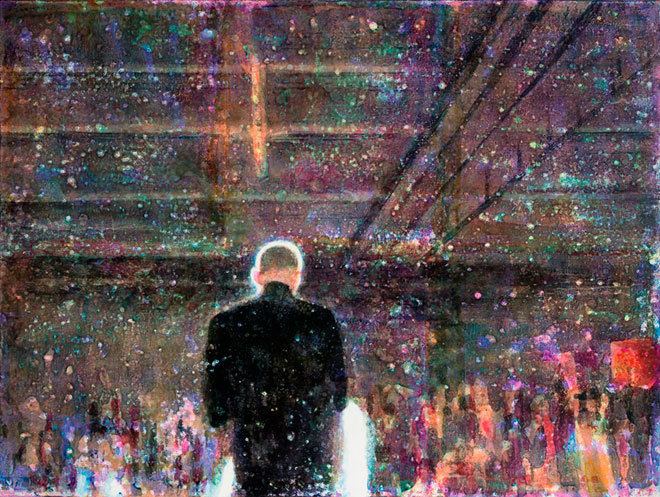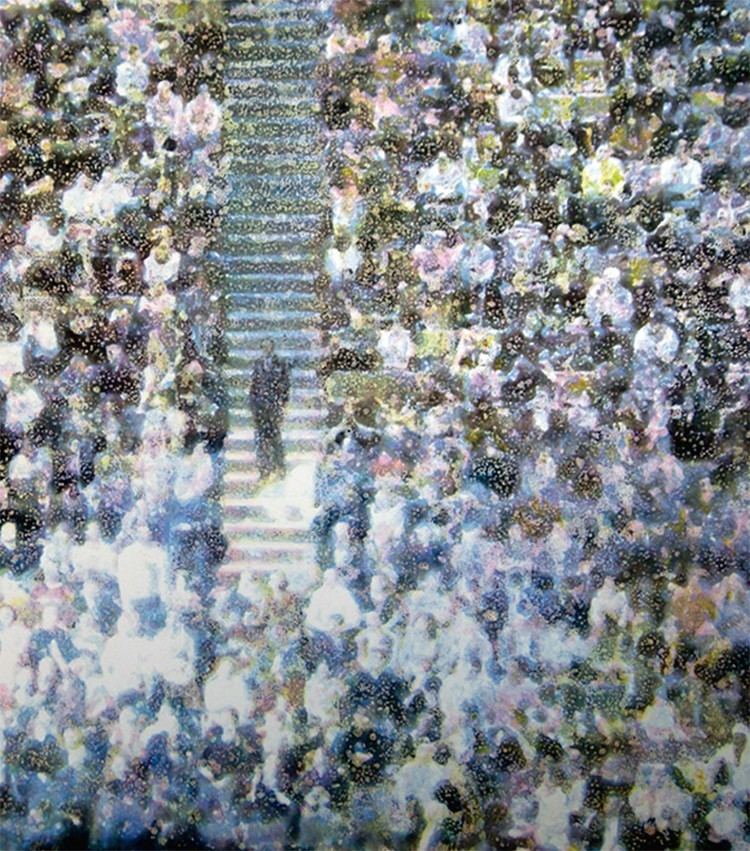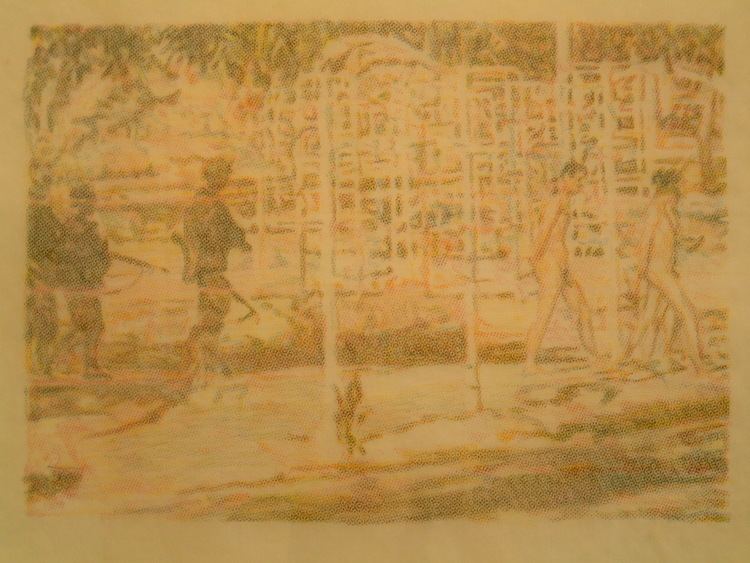Name Stephen Andrews | Role Artist | |
 | ||
Books Archival Dialogues: Reading the Black Star Collection | ||
Stephen andrews on jmw turner
Stephen Andrews is a Canadian artist based in Toronto. Born in 1956 in Sarnia, Ontario, Andrews is known for making artworks that mediate between analogue technique and mass media imagery.
Contents
- Stephen andrews on jmw turner
- Stephen andrews pov
- Art practice
- Trump Tower Commission Toronto
- Selected publications
- Selected exhibitions
- Selected public collections
- References

Stephen andrews pov
Art practice

Using images sourced from newspapers, television, film and the internet, Stephen Andrews’ creates hand crafted works in a range of mediums, including oil, latex, crayon, silkscreen and linoleum-cut printing, rubber stamps, and animation. A distinctive feature of Andrews’ art is his interest in creating the look of mechanical reproduction by analogue means. The artist has stated that in his work he renders: “the digital, the dot matrix in print reproduction, film or television technologies...by hand in an attempt to represent both the message and the means by which it is delivered.” By using a technique that gives equal weight to both media and message of his chosen topics, Andrews creates a space for reflection on our daily consumption of the imagery we get from what he calls "virtual or ether" media. The portrait series of graphite-and-oil-rubbed wax tablets, Facsimile (1991) uses obituary portraits of men who have died from as source material, “reproduced from faxed images...the details are pixellated, smudgy.” By this method, “Facsimile... designates the technology of reproduction and transmission that inhabits the images.” Atom Egoyan writing about a show he curated of Andrews’ work notes, “Facsimile’s most haunting aspect...is how it traces the erosion and evolution of personal identity from an anonymous mediated source.”

While Andrews’ output prior to 1996 tends to be in black and white or monochrome, around this time he introduces colour into his work. The Weather Series (1996) begins the artists’ extended investigation into the processes of colour generation and the four-colour separation printing processes. For Andrews, weather provides an analogy for the quickly changing circumstances of life, likening it to his own experience of living with HIV. Andrews’ method of homemade colour separation evokes both the 19th-century painting technique of Pointillism: “in which small, distinct dots of pure color are applied in patterns to form an image”, and the Ben-Day dots of mechanical printing. Beyond these references, Andrews’ uses the technique to, at the same time, evoke the alchemy of vision and break its mechanics down. As a result, Andrews creates works that “hover at legibility.” “The pixilation or dot matrix completely obscures details, making specifics impossible to see. We can't grasp the full picture.“ The series of rubbed-crayon drawings, The Quick and the Dead (2004), feature stills derived from video footage of the Iraq war. By drawing the viewer’s eye back to the surface of the work, he creates ambiguities of meaning. Considered in relation to the source material Andrews uses, the work has political implications, “suggesting the impossibility of knowing the circumstances and contexts of what they depict.” The artist has stated the series is “my response to the lack of photographic evidence of the war...information was really only available on websites at that time. The disposability of these media images is in stark contrast to the effects on the lives of those involved.“ Andrews also used 600 drawings from the series to create one minute animation, The Quick and the Dead (2004).
Trump Tower Commission (Toronto)

The Trump Tower in Toronto commissioned a mosaic version of the Andrews’ work A small part of something larger (2009). As part of his development of the work, Andrews created The View From Here a large-scale triptych of a “tightly cropped crowd scene” The mosaic of 500,000 small porcelain, glass, stone and gold tiles was crafted by Montreal-based Mosaika Art & Design.
Selected publications

